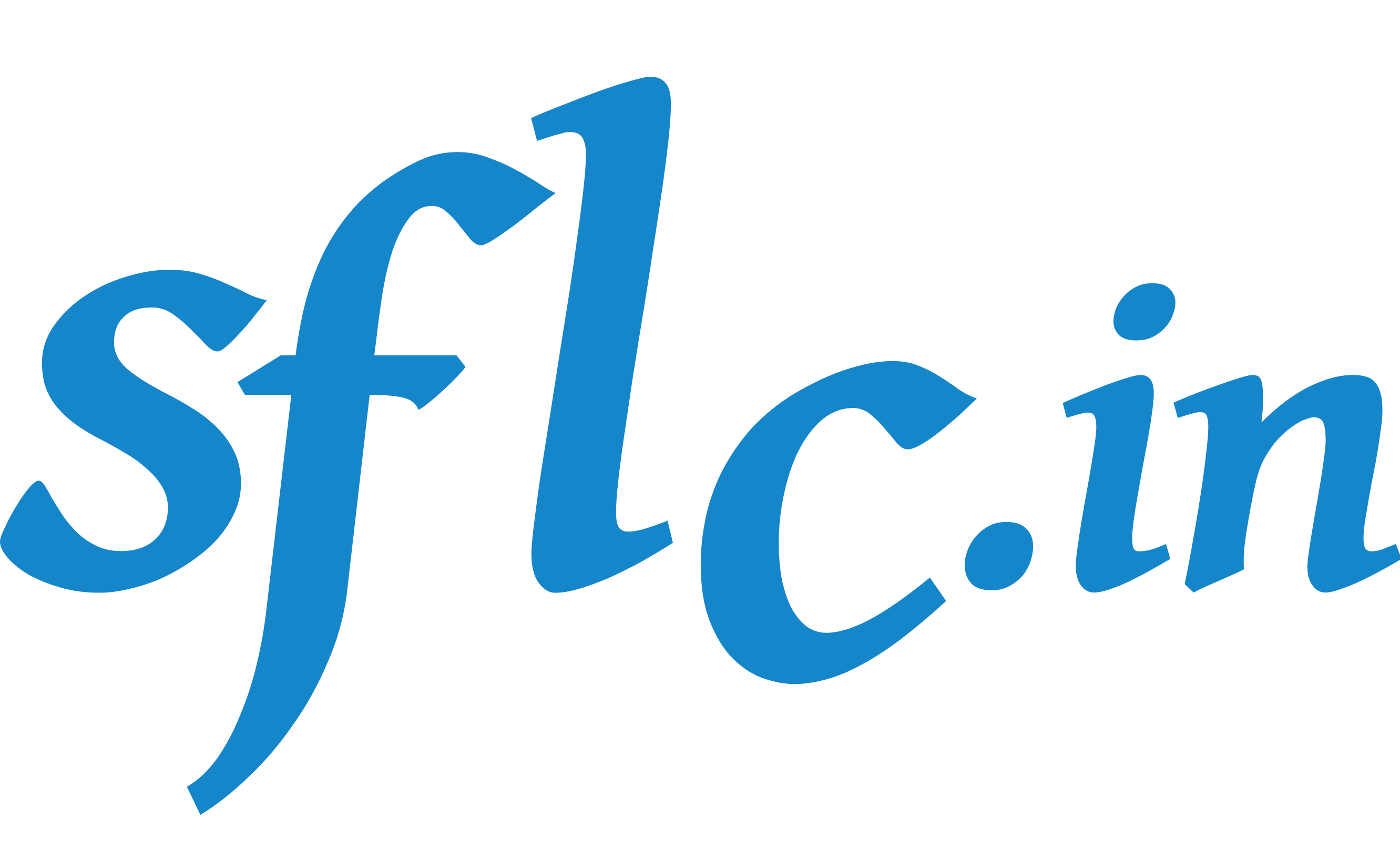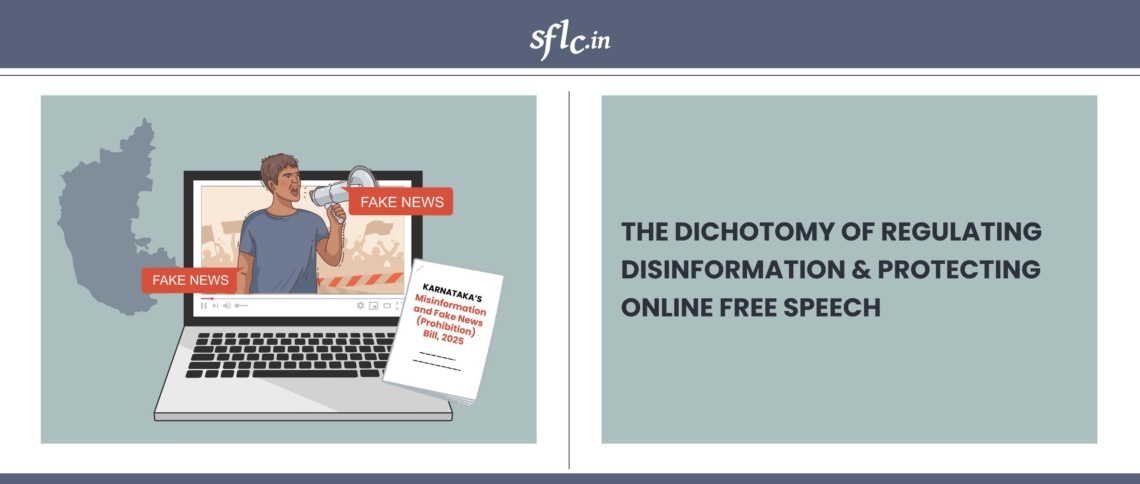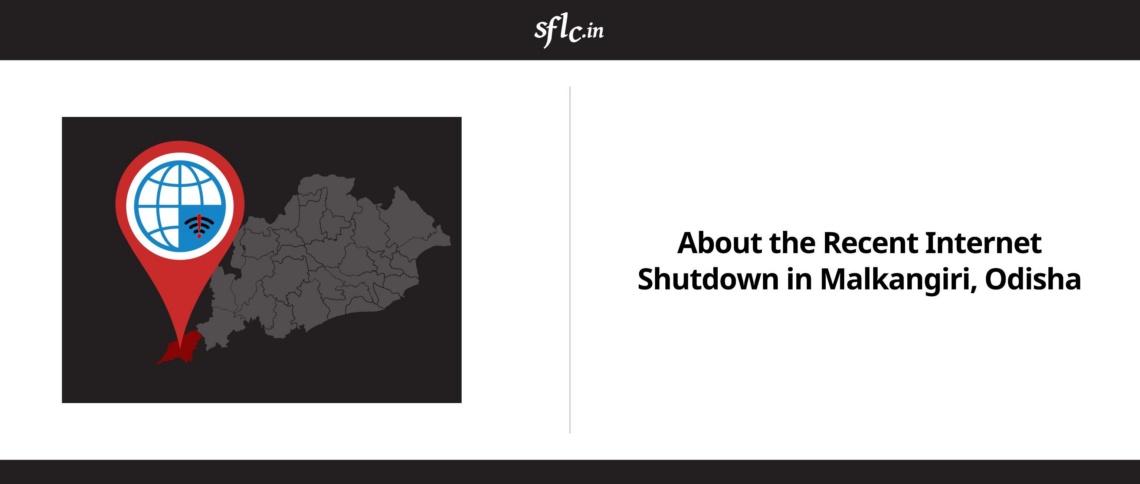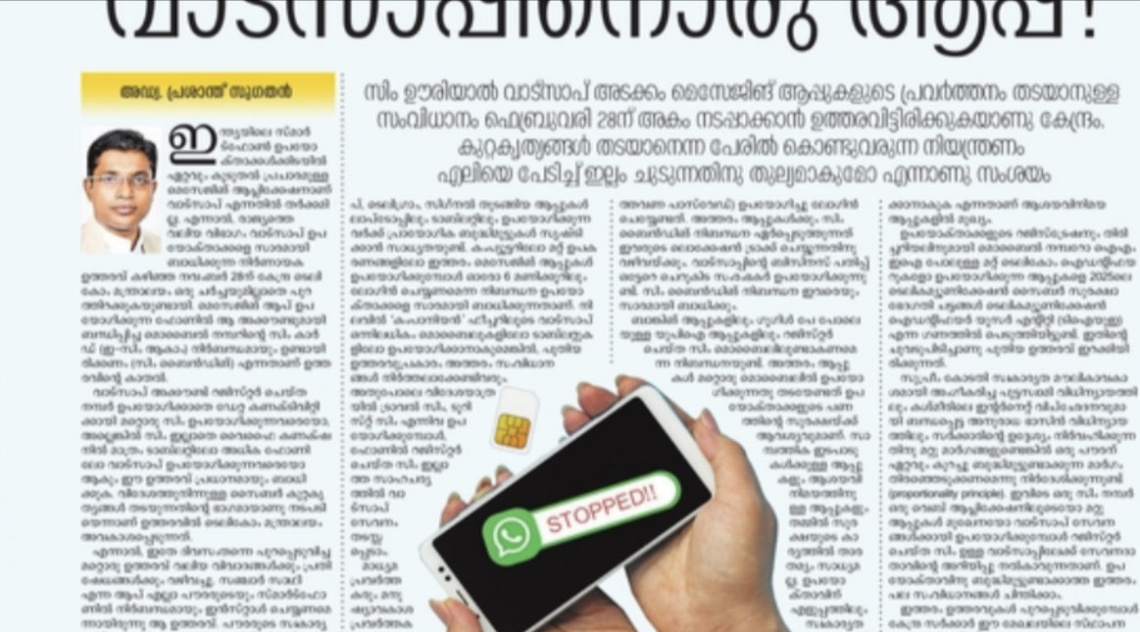Introduction
In June 2025, media reports uncovered the hidden existence of a (leaked) proposed law named as “Karnataka Mis-information and Fake News (Prohibition) Bill, 2025 (“the Bill or the Karnataka Misinformation Bill”). Within a week, the Bill garnered the attention of digital rights organisations, given its remarkably punitive approach to prohibiting (mis)disinformation and “fake news”. Adopting such a regulatory approach in a country where people tend to forward content due to starkly lower levels of digital literacy and awareness is likely to result in unfair outcomes and would fail to address the actual root cause. In this blog post, SFLC.in aims to highlight several points that could be considered for upcoming versions of the Bill.
Please note that this analysis might be subject to further revisions and updates in the future, given that the said copy of the Bill is unofficial and yet to be promulgated by the concerned State Government as well as the Ministry.
Analysing the cascading impacts of the Karnataka Misinformation Bill
Another reminder of the dire reality of pre-legislative consultations
In a previous blog post, SFLC.in highlighted a concerning trend—where key legislations having long-term ramifications on digital privacy, online free speech and intermediary liability—were not subjected to an exhaustive public consultation process. Similar to the developments on the Broadcasting Bill in 2024, it was media reports on the Karnataka Misinformation Bill that first revealed its existence, rather than an official announcement from the Government of Karnataka or the concerned Ministries (who have been mentioned in the draft of the Bill).
Given the nascent and evolving nature of discourse on this issue, it becomes even more vital to conduct a wider stakeholder consultation process to understand the problem comprehensively, before formulating draft regulations on it. This does not intend to negate the gravity of the issue and its implications on a participative democracy. Rather, it becomes imperative to think critically about regulation as an effective tool that adopts proportionate measures to combat such problems.
However, such laws can be developed only through an exhaustive and inclusive consultation process, where experts from various domains such as civil society, journalism, and the private sector can effectively contribute in identifying the reasons behind the occurrence of such issues, coalesce to build discourse and share capacity to build collaborative solutions for the same.
At this juncture, it is also critical to impress upon the need for exploring solutions outside of regulation might help with mitigating the harms occurring from the flow of misinformation and fake news online. Capacity building and digital literacy could be the first yet critical line of defense to combat mis-disinformation.
Regulating misinformation, disinformation or the broader access to information online?
A closer perusal of definitions of ‘misinformation’ and ‘fake news’ hint at a significant conflation of the core concepts relating to this issue. As noted in SFLC.in’s statement on the Bill, there are not established but only indicative definitions of misinformation, disinformation and fake news. According to the United Nations General Assembly (“UNGA”) American Psychological Association and United Nations High Commissioner for Refugees (UNHCR), misinformation is defined as ‘false or inaccurate information—getting the facts wrong’. On the contrary, disinformation is defined as ‘false information which is deliberately intended to mislead—intentionally misstating the facts’.
In our analysis, inclusion of phrases such as ‘knowingly or recklessly making a false or inaccurate statement of fact’ or ‘misquotation or the false and/or inaccurate report of one’s statement’, showcases the apparent conflation of intentionally sharing false information or unintentionally sharing the same. Such definitions could curtail and induce a long-lasting chilling effect on the freedom of press, access to information online and online free speech.
Empowering through digital literacy: A vital first line of defense
While disinformation campaigns are often targeted and driven with the intent to mislead the larger public, misinformation and fake news tends to spread due to existing and fundamental vulnerabilities within human psychology. Independent fact-checking organisations have cited that the users have a higher propensity to share misinformation or fake news as and when it reinforces their confirmation biases. Moreover, such content can trigger such responses based on fast, intuitive and emotional thinking (recognized as System 1 thinking by Nobel Laureate psychologist Daniel Kahneman).
Additionally, everyday users of social media browse through several forms of content and at a very rapid rate—which has shortened attention spans and facilitated cognitive ease—where people think to protect their ideologies instead of accessing information to discover what is actually true. However, the underlying point of this is that not all forms of misinformation or fake news are shared with the intent to mislead a larger number of people. It is unlikely that adopting such a punitive approach (as encapsulated within clauses 3, 4, 7 and 12 of the Bill) to this issue will treat the root cause of the underlying problem.
International human rights organizations like UNESCO have cited the importance of empowering people, through support for media and information literacy programmes. Through SFLC.in’s Digital Security Trainings, we strive to build digital literacy, resilience and awareness of the various technological and legal means to protect oneself from the broad spectrum of harms that can occur online.
Restricting the flow of misinformation or curbing freedom of speech and expression online: Reviving the unconstitutional spirit of Section 66A to regulate disinformation
In its report, the UNGA reiterated the devastating impact of disinformation on societies and civil discourse. Simultaneously, UNGA also highlighted that State responses to disinformation should not unduly infringe upon fundamental human rights such as freedom of speech and expression.
The Bill is likely to contravene the international human rights standards along with existing Indian constitutional law jurisprudence. The State Government, along with the Fake News on Social Media Authority, will be tasked with extant powers to prohibit publication and dissemination of content that qualifies as “mis-information” and fake news under the Bill. As stated earlier, vague and conflated conceptualization of vital concepts such as misinformation and fake news might result in outcomes that undermine access to information and freedom of speech and expression online. In its current form, the provisions of the Bill could be misused to target permissible speech—especially content that is produced with the intent of building awareness and capacity, voicing dissent and supporting access to authentic and truthful information, as protected under Article 19 of the Constitution of India.
The Supreme Court of India’s ruling in Shreya Singhal was meant to serve as a landmark for developing an effective yet proportionate framework for regulating online free speech in India. However, it can be seen that the unconstitutional spirit of the repealed Section 66A has been revived in an equally pernicious form, particularly within clause 2(i) & (k) (that define mis-information and fake news) read with clauses 3, 4 and 7. These clauses criminalise online speech—without carefully distinguishing the boundaries of what should be truly permissible from non-permissible. Rather than preventing the flow of mis-disinformation, it is more likely to curtail a broader ambit of speech, expression and information that is available online.
In the statement on this Bill, SFLC.in had contended how the constitution of a government mandated fact-checking authority is detrimental to the functioning of a healthy democracy. However, the implications of constituting the Fake News on Social Media Authority, as envisaged under the Bill, are far more debilitating on civil discourse and independent journalism, than one can imagine in an instant. The Authority will be unable to exercise its envisioned role to protect people from elaborate, targeted disinformation campaigns. Rather, it is likely to serve as an expansion of the State Government’s powers to censor independent journalism, stifle dissenting voices and possibly, deepen the underlying obscurity of online content, where what is true and authentic is indistinguishable from what is false and misleading.
Conclusion
In its unwavering mission to defend digital rights and freedom, SFLC.in will be keen to join the dialogue with multiple stakeholders to understand the best practices to combat the flow of mis-disinformation and fake news online. Given the gravity of the problem, it would be perfunctory to reiterate the need for a coordinated response that brings together expertise cutting across various disciplines such as civil society, academia, journalism, private sector as well as government.
The reality is that the most suitable approach can be derived only if such dialogue involves participation of these diverse perspectives to build a response that not only mitigates the harms arising out of such content but is also in effective harmony with fundamental human rights as enshrined within the Constitution of India as well as the legal jurisprudence espoused by the Supreme Court and High Courts in India. Having said that, it will be critical to build resilience and literacy amongst various stakeholders to address the fundamental problem of this issue, instead of considering punitive approaches to the same.



